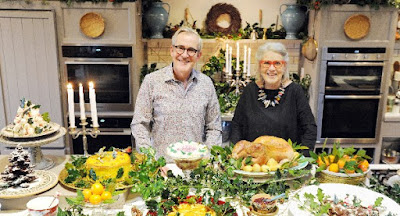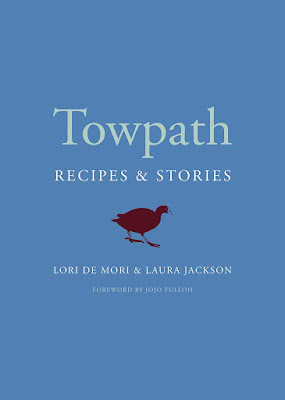Several of the ‘born again’ cooks I’ve spoken to are messianic about the therapeutic value of the experience and how amazed they are to find themselves actually feeling excited about getting into the kitchen and the “Oops” they get in their tummy from the reaction of their family to each new home-made dish. This experience has definitely heightened awareness of the importance of passing on each newly learned skill to the next generation.
We surely need all these little highlights to enhance the quality of our lives at any time but even more so during these tumultuous and for many, heartbreaking times.
As you will know, delicious home cooking has always been the most important focus for me and interestingly this year many of the books published have focussed on comforting dishes to nourish and feed our precious family and friends.
So thought I’d share five titles of new cookbooks to use up those Christmas book tokens. Alternatively order the title that appeals to you online, but I urge you to buy directly from your local book shops or from Kenny’s in Galway who have a huge list of titles and are super efficient and are in many cases cheaper than the well known international companies and plus your order will support an Irish firm.
Next up Clodagh’s Weeknight Kitchen
So thought I’d share five titles of new cookbooks to use up those Christmas book tokens. Alternatively order the title that appeals to you online, but I urge you to buy directly from your local book shops or from Kenny’s in Galway who have a huge list of titles and are super efficient and are in many cases cheaper than the well known international companies and plus your order will support an Irish firm.
Home Cookery Year from Claire Thompson, published by Quadrille is definitely worth having in your repertoire. You may even want to buy two copies, one to keep and another to gift. I found it incredibly difficult to choose just a couple of recipes. It’s divided into individual seasonal chapters, focusing on midweek dishes on a budget, from the larder, salads as light lunches or side dishes, treat yourself, leisurely weekend cooking and celebration feasts.
You may not have heard of Claire before but, she writes regularly for The Telegraph, BBC Good Food and Olive Magazines and does quite a bit of media work. Follow her on Instagram @5oclockapron for a daily snapshot of the food she cooks at home.
Next up Clodagh’s Weeknight Kitchen
by Clodagh McKenna Clodagh was a student here at Ballymaloe Cookery School in 2000. She then went on to then work alongside Myrtle Allen in Ballymaloe House kitchens, sold paté at the Farmers Markets in Midleton every Saturday, presented several TV series, wrote 8 bestselling cookbooks, while running several restaurants… all the while oozing energy and passion for food. More recently, her daily pod cast Clodagh’s Midweek Kitchen has almost 100K followers... plus can this girl dance! and she keeps hens…
For me one of the most meaningful books of the year is A Taste of Home, 100% of the proceeds from the sales of this really beautiful book go to support the work of The Passages, a British charity who for over 40 years have helped thousands of homeless people off the streets for good in the UK, among them many Irish. During 2020 their work was made even more challenging due to the Covid 19 pandemic. The original book concept was created by Kyle Cathie, my long time friend and publisher of many years, now retired. It’s packed with gorgeous recipes donated and mindfully chosen by cooks and chefs from all over the world. So many interesting ideas to try...
Always Home another of my favourite books of the year, an endearing and enchantingly written memoir by Fanny Singer about growing up as the daughter of the renowned chef and founder of Chez Panise, Alice Waters. A story of food, family and the need for beauty in all aspects of life. What could be more appealing during these uncertain times? A charmed childhood for sure, beautifully written and peppered with recipes for many of her beloved childhood foods, published by Orion Publishing.
And finally, just in, The Happy Health Plan yet another cracker from the two handsome chaps from Greystones, David and Stephen Flynn. Simple and tasty plant-based food to nourish your body inside and out.
For me one of the most meaningful books of the year is A Taste of Home, 100% of the proceeds from the sales of this really beautiful book go to support the work of The Passages, a British charity who for over 40 years have helped thousands of homeless people off the streets for good in the UK, among them many Irish. During 2020 their work was made even more challenging due to the Covid 19 pandemic. The original book concept was created by Kyle Cathie, my long time friend and publisher of many years, now retired. It’s packed with gorgeous recipes donated and mindfully chosen by cooks and chefs from all over the world. So many interesting ideas to try...
Always Home another of my favourite books of the year, an endearing and enchantingly written memoir by Fanny Singer about growing up as the daughter of the renowned chef and founder of Chez Panise, Alice Waters. A story of food, family and the need for beauty in all aspects of life. What could be more appealing during these uncertain times? A charmed childhood for sure, beautifully written and peppered with recipes for many of her beloved childhood foods, published by Orion Publishing.
And finally, just in, The Happy Health Plan yet another cracker from the two handsome chaps from Greystones, David and Stephen Flynn. Simple and tasty plant-based food to nourish your body inside and out.















































